Safety Advantages of Home Automation Systems
In today’s fast-paced world, the safety of our homes has never been more crucial. With the rise of technology, home automation systems have emerged as a game-changer in ensuring the safety and security of our living spaces. Imagine being able to control your home’s security features right from your smartphone or tablet! This article explores the various safety benefits that home automation systems offer, including enhanced security, convenience, and peace of mind for homeowners. It’s like having a personal security guard at your fingertips, ready to alert you of any potential threats while you’re away or even at home.
Home automation systems provide advanced security features that significantly elevate the protection of your property. With devices like smart locks and surveillance cameras, homeowners can monitor their property remotely. Imagine being at work and receiving a notification on your phone about someone approaching your front door. This is the power of modern technology! You can take action immediately, whether it’s unlocking the door for a friend or alerting the authorities if something seems off. The ability to receive real-time alerts about suspicious activities transforms how we think about home security.
One of the standout features of home automation is the ability to keep an eye on your property from anywhere in the world. With remote monitoring capabilities, homeowners can ensure they are always aware of potential security threats. It’s like having a virtual security guard that never sleeps! Whether you’re on vacation soaking up the sun or just out for a quick grocery run, you can check the live feeds from your security cameras. This constant vigilance allows for prompt action if necessary, ensuring that your home remains a safe haven.
Mobile alerts are another fantastic aspect of home automation systems. These notifications inform homeowners of any unusual activity detected by their security systems. Imagine receiving a text alert while you’re out, saying that motion has been detected in your backyard. This immediate notification allows for an instant response to potential security breaches, enhancing overall safety. It’s like having a direct line to your home’s security system, keeping you in the loop no matter where you are.
Many home automation systems integrate seamlessly with professional security services. This integration provides an additional layer of protection through continuous monitoring and rapid response to emergencies. If your system detects a break-in, it can automatically notify the local authorities, ensuring that help is on the way before you even have time to react. With this level of support, you can rest easy knowing that your home is being watched over by professionals who are trained to handle emergencies.
Homeowners can customize their security settings based on their specific needs. This means you can set your system to alert you only during certain hours or for specific types of movements. It’s like tailoring a suit; you want it to fit just right! By ensuring that your home automation system is tailored to effectively protect your property, you can enjoy peace of mind knowing that your home is secured in a way that suits your lifestyle.
Video surveillance systems integrated into home automation allow homeowners to review footage and monitor live feeds. This capability enhances your ability to detect and respond to security incidents. Picture this: you’re at a family gathering and receive an alert about movement at your front door. You can pull up the live feed and see who it is before deciding whether to engage. This level of control and awareness can be invaluable in maintaining a safe home environment.
Home automation systems can significantly improve emergency response times. For instance, in the event of a fire, break-in, or medical emergency, your system can automatically notify authorities or emergency contacts. This ensures that help is on the way as quickly as possible, which can be crucial in life-threatening situations. Think of it as having a personal assistant who knows exactly when to call for help, giving you one less thing to worry about in a crisis.
Smart smoke and carbon monoxide detectors are essential components of a home automation system. They can alert homeowners and emergency services in case of a threat, significantly improving safety measures within the home. Imagine being alerted to smoke even when you’re not home; your system can notify the fire department automatically. This proactive approach ensures that your home remains a safe space for you and your loved ones.
Automated lighting systems can simulate presence by turning lights on and off, deterring potential intruders and enhancing the safety of the home, especially when homeowners are away. Think of it as a clever trick to make it look like someone is home, even when you’re miles away. It’s a simple yet effective way to add an extra layer of security to your property.
- What are home automation systems? Home automation systems are technology solutions that allow homeowners to control various aspects of their home, including security, lighting, and climate, from a centralized platform, often via a smartphone app.
- How do home automation systems improve security? They improve security through features like remote monitoring, mobile alerts, video surveillance, and integration with professional security services, all of which provide real-time awareness and response capabilities.
- Can I customize my home automation system? Yes, most systems offer customizable settings to fit your specific security needs and preferences.
- What happens in case of an emergency? Home automation systems can automatically notify emergency services or contacts in case of fire, break-ins, or medical emergencies.

Enhanced Security Features
This article explores the various safety benefits that home automation systems offer, including enhanced security, convenience, and peace of mind for homeowners.
In today's fast-paced world, ensuring the safety of your home is more crucial than ever. Home automation systems come equipped with advanced security features that significantly enhance your property's safety. Imagine being able to lock your doors, adjust your security cameras, and receive notifications all from the palm of your hand. With smart locks, you can control who enters your home remotely. Forget about fumbling for keys or worrying if you left the door unlocked; with just a tap on your smartphone, you can secure your home from anywhere.
Moreover, surveillance cameras integrated into these systems allow you to monitor your property in real time. This means that whether you're at work, on vacation, or just out for a quick errand, you can keep an eye on things. Many modern cameras come with features like night vision and motion detection, ensuring that you have a clear view of your surroundings, day or night. If something seems off, you can act quickly, whether that means calling the authorities or checking in with a neighbor.
To illustrate the effectiveness of these features, consider the following table that compares traditional security methods with modern home automation systems:
| Feature | Traditional Security | Home Automation |
|---|---|---|
| Remote Access | No | Yes |
| Real-Time Alerts | No | Yes |
| Smart Locks | Keys | Keyless entry via smartphone |
| Surveillance | Static Cameras | Smart Cameras with mobile access |
The integration of mobile alerts is another game-changer. Whenever your home automation system detects unusual activity, it sends immediate notifications to your smartphone. This allows for a swift response, whether that means checking the live feed from your camera or alerting the police. It's like having a personal security guard on duty 24/7, giving you peace of mind knowing that your home is being monitored even when you're not there.
Furthermore, many of these systems can integrate seamlessly with professional security services. This means that if your home automation system detects a break-in or emergency, it can automatically notify local authorities or emergency contacts. This rapid response can be the difference between a minor incident and a major disaster, reinforcing the overall safety of your home.
Customization is key when it comes to security. Homeowners can tailor their security settings based on specific needs or preferences. For example, you might want to set your system to alert you only during certain hours or to recognize familiar faces through advanced facial recognition technology. This level of customization ensures that your home automation system works for you, not the other way around.
In summary, the enhanced security features of home automation systems are not just about convenience; they are about creating a safer environment for you and your loved ones. By taking advantage of smart locks, surveillance cameras, and mobile alerts, you can significantly reduce the risk of security breaches and enjoy the peace of mind that comes with knowing your home is protected.
- What is a home automation system? A home automation system allows you to control various aspects of your home, such as lighting, security, and temperature, remotely through your smartphone or other devices.
- Are home automation systems expensive? The cost can vary widely depending on the features you choose. However, there are options available for various budgets.
- Can I integrate home automation with existing security systems? Yes, many home automation systems are designed to integrate with existing security systems for enhanced functionality.
- How does remote monitoring work? Remote monitoring allows you to view live feeds from security cameras and receive alerts about unusual activity from anywhere using your smartphone or tablet.
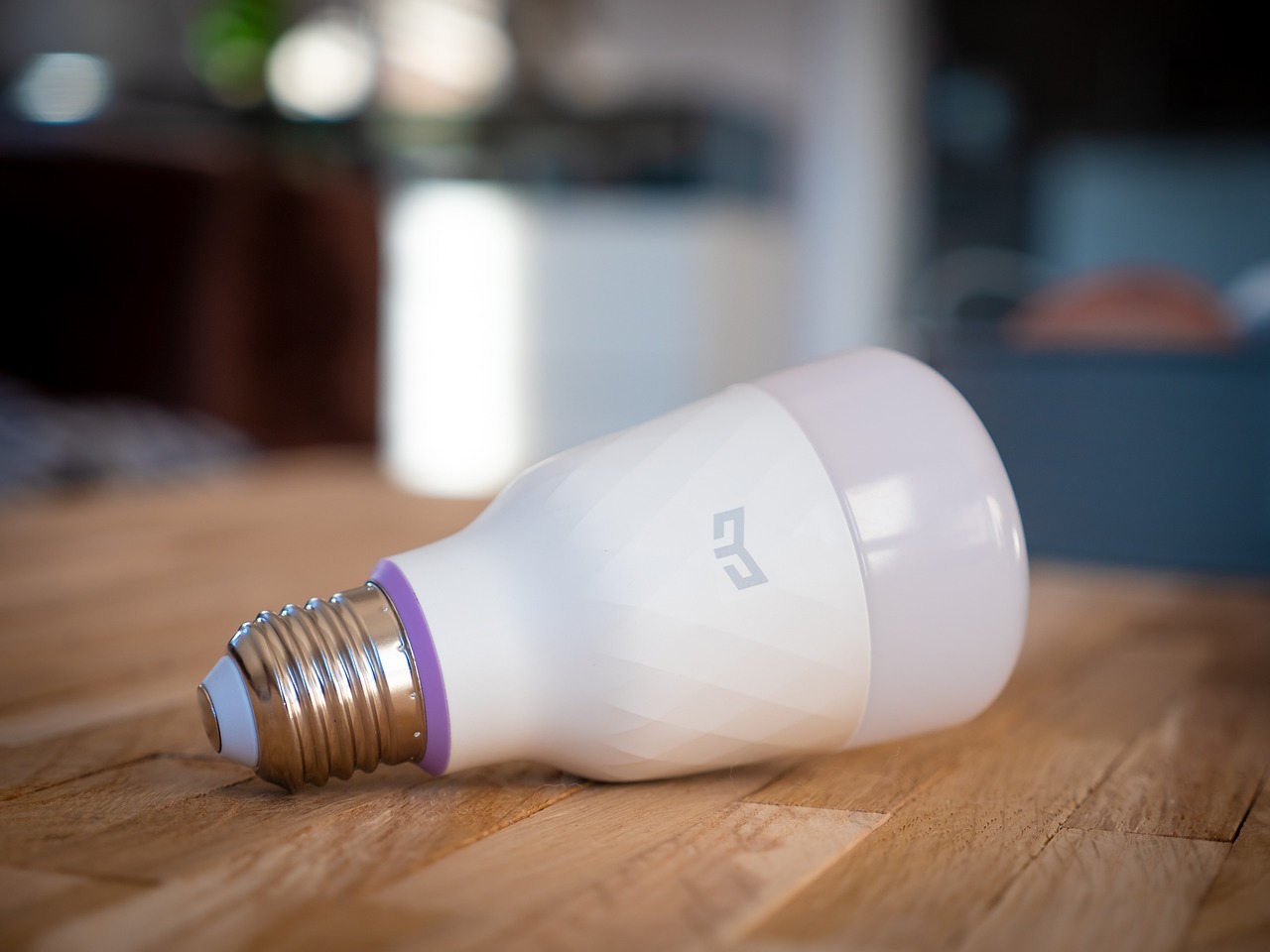
Remote Monitoring
This article explores the various safety benefits that home automation systems offer, including enhanced security, convenience, and peace of mind for homeowners.
Home automation systems provide advanced security features such as smart locks and surveillance cameras, enabling homeowners to monitor their property remotely and receive real-time alerts about suspicious activities.
Imagine being able to check in on your home from anywhere in the world—whether you're lounging on a beach or stuck in a meeting at work. is a game-changer for modern homeowners, offering a sense of control and security that was once a luxury. With smart home technology, you can keep an eye on your property through your smartphone or tablet, ensuring that you’re always connected to what matters most. This capability not only enhances your security but also provides peace of mind.
Many home automation systems come equipped with features that allow you to view live camera feeds, receive notifications, and even control devices remotely. For instance, if your security camera detects movement, you’ll get an instant alert on your phone. This means that whether you're at the grocery store or halfway across the globe, you can take immediate action if something seems off. It’s like having a personal security guard available 24/7.
With the rise of IoT (Internet of Things), remote monitoring has become more sophisticated. Homeowners can now integrate various devices into a single platform, allowing for seamless communication between systems. For example, if a door sensor is triggered, it can activate the cameras to start recording, while simultaneously sending you a notification. This interconnectedness not only enhances your ability to monitor your home but also allows for a more comprehensive security response.
In addition to security cameras, remote monitoring can include:
- Smart doorbells with video capabilities
- Smart locks that allow you to grant access remotely
- Environmental sensors that detect smoke, carbon monoxide, or water leaks
These features collectively create a robust security framework that gives homeowners the tools they need to respond proactively to potential threats. The ability to monitor your home remotely is not just a convenience; it’s a vital component of modern home safety.
Mobile alerts are an essential feature of remote monitoring. They notify homeowners of any unusual activity detected by their home automation systems, allowing for immediate response to potential security breaches and enhancing overall safety. Imagine receiving a notification that someone is at your front door, even when you’re miles away. These alerts can be customized to suit your preferences, ensuring that you only receive notifications that matter to you.
Many home automation systems integrate seamlessly with professional security services, providing an additional layer of protection through monitoring and rapid response to emergencies. This means that if your system detects a break-in, not only will you be alerted, but the security service can also dispatch help immediately.
Homeowners can customize their security settings based on their specific needs, ensuring that their home automation system is tailored to effectively protect their property. Whether you want to receive alerts for specific times of day or only for certain types of activity, the flexibility of these systems is one of their greatest strengths.
Video surveillance systems, integrated into home automation, allow homeowners to review footage and monitor live feeds, enhancing their ability to detect and respond to security incidents. This capability can be particularly useful for families with children or pets, as it enables you to check in on them at any time.
Home automation systems can facilitate faster emergency response by automatically notifying authorities or emergency contacts in case of fire, break-ins, or medical emergencies, ensuring quicker assistance.
Smart smoke and carbon monoxide detectors can alert homeowners and emergency services in case of a threat, significantly improving safety measures within the home.
Automated lighting systems can simulate presence by turning lights on and off, deterring potential intruders and enhancing the safety of the home, especially when homeowners are away.
- What is remote monitoring?
Remote monitoring allows homeowners to keep an eye on their property through smart devices, receiving alerts and viewing live feeds from anywhere.
- How can remote monitoring enhance home security?
It provides real-time alerts and the ability to respond quickly to suspicious activities, increasing overall safety.
- Are mobile alerts customizable?
Yes, homeowners can customize alerts based on their preferences, ensuring they receive notifications that matter to them.
- Can home automation systems integrate with professional security services?
Absolutely! Many systems can seamlessly connect with professional monitoring services for added security.
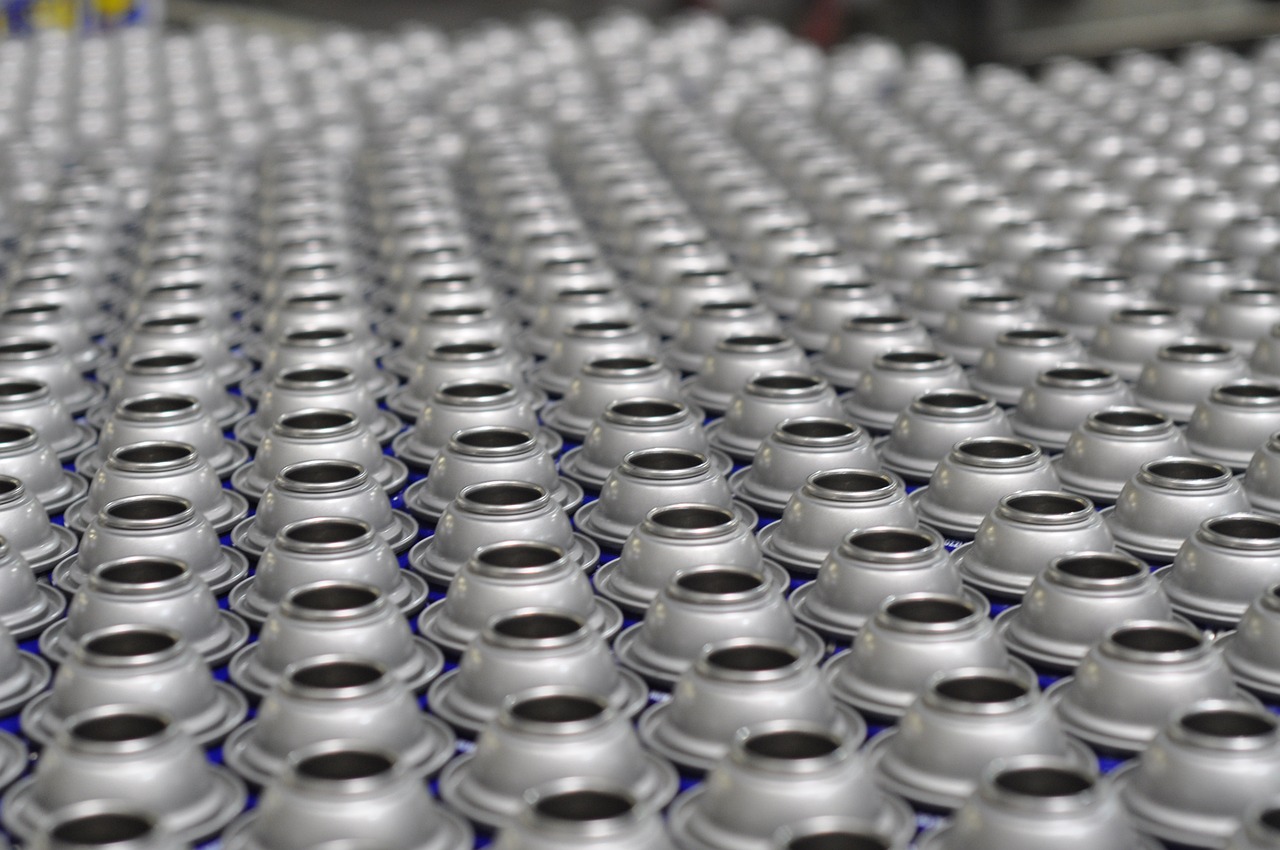
Mobile Alerts
In today's fast-paced world, staying connected is more crucial than ever, especially when it comes to the safety of your home. serve as an essential feature of home automation systems, providing homeowners with real-time notifications about any unusual activities detected around their property. Imagine being at work or on vacation, and suddenly receiving an alert on your smartphone that someone is trying to enter your home. This immediate notification enables you to take swift action, whether that means contacting the authorities or checking your surveillance feeds.
These alerts can be customized to suit your preferences, ensuring that you only receive notifications that matter to you. For instance, you might want to be alerted if a door is opened unexpectedly, or if motion is detected in your yard after dark. This level of control not only enhances your peace of mind but also empowers you to respond proactively to potential threats. In fact, many systems allow you to set specific parameters for alerts, such as:
- Time-based alerts: Get notified only during certain hours when you’re away.
- Location-based alerts: Receive notifications when you’re a certain distance from your home.
- Type of alerts: Choose whether to be notified for all activities or just significant events.
Furthermore, the convenience of mobile alerts extends beyond mere notifications. Many modern home automation systems allow you to interact with your security features directly from your phone. For example, if you receive an alert that someone is at your front door, you can view the live feed from your security camera and even communicate with the visitor through a two-way audio feature. This level of interaction not only deters potential intruders but also provides a sense of control and security.
Ultimately, mobile alerts are a game-changer in home security, transforming how homeowners protect their properties. By keeping you informed and connected, these alerts not only enhance your safety but also give you the confidence to manage your home’s security from virtually anywhere. So whether you're at the office, out for dinner, or enjoying a weekend getaway, you can rest easy knowing that you're just a notification away from ensuring your home is safe and sound.
Q: How do mobile alerts work in home automation systems?
A: Mobile alerts work by sending notifications to your smartphone or tablet whenever a security event occurs, such as unauthorized entry or motion detection. This allows you to respond quickly to potential threats.
Q: Can I customize the types of alerts I receive?
A: Yes! Most home automation systems allow you to customize alerts based on your preferences, including specific times, types of events, and even locations.
Q: What should I do if I receive a mobile alert?
A: If you receive a mobile alert, it's essential to assess the situation. Check your surveillance feeds, and if necessary, contact local authorities or a trusted neighbor for assistance.
Q: Are mobile alerts reliable?
A: Yes, mobile alerts are generally reliable, but their effectiveness can depend on your internet connection and the specific home automation system you have in place. Regularly testing your system can help ensure everything is functioning correctly.
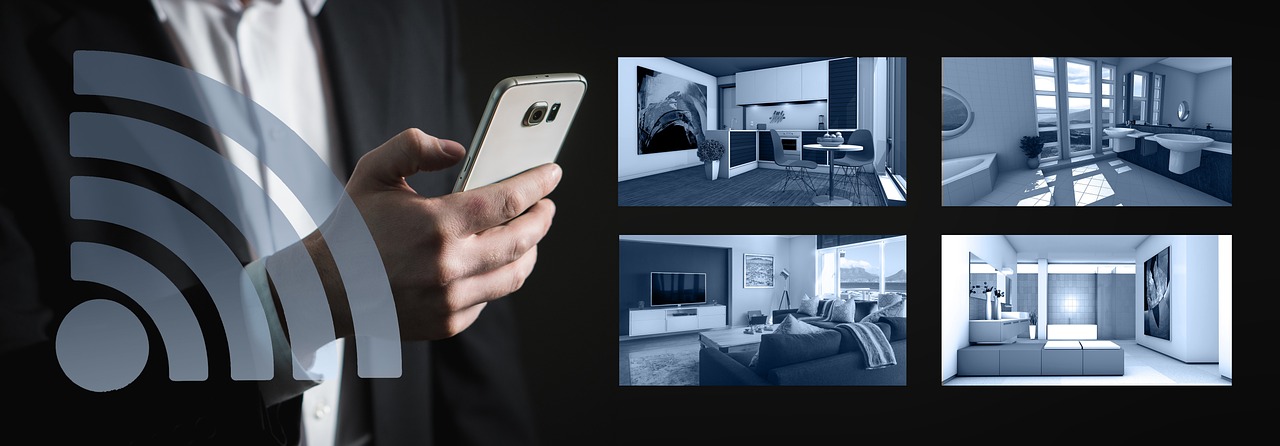
Integration with Security Services
One of the most compelling aspects of home automation systems is their ability to integrate seamlessly with professional security services. Imagine having a digital fortress that not only protects your home but also has a direct line to the experts who can spring into action at a moment's notice. This integration creates a safety net that is hard to beat, providing homeowners with an added layer of security and peace of mind.
When you think about it, this integration is akin to having a personal bodyguard who is always on alert. The home automation system can automatically notify security personnel or emergency responders if it detects a break-in, fire, or even a medical emergency. This means that, instead of waiting for the homeowner to react, trained professionals are already mobilizing to address the situation. This swift response can be the difference between a minor incident and a major disaster.
Moreover, many home automation systems offer features that allow for real-time communication with security services. For instance, if your smart camera captures suspicious activity, the system can send a signal to the security service, which can then verify the threat and take appropriate action. This level of connectivity ensures that you're not just relying on technology but also on human expertise.
To illustrate the benefits, consider the following table that outlines the key features of home automation systems integrated with security services:
| Feature | Description |
|---|---|
| 24/7 Monitoring | Professional security teams monitor your home around the clock, ready to respond to alarms and alerts. |
| Immediate Alerts | Receive instant notifications on your smartphone if any unusual activity is detected. |
| Emergency Dispatch | Automatic communication with local authorities for rapid response in case of emergencies. |
| Remote Access | Control and monitor your security system from anywhere, ensuring you’re always connected. |
This integration not only enhances the effectiveness of home automation systems but also empowers homeowners to take control of their safety in a way that’s never been possible before. With such advanced features at your fingertips, you can rest easy knowing that your home is protected by a sophisticated system that works in tandem with professional security services.
- What is home automation?
Home automation refers to the use of technology to control various systems in your home, such as lighting, security, and appliances, often remotely via a smartphone or computer. - How does integration with security services work?
Home automation systems can connect with professional security services to provide real-time monitoring and immediate alerts in case of emergencies, ensuring a rapid response. - Can I customize my security settings?
Yes, most home automation systems allow homeowners to customize their security settings based on their specific needs and preferences. - Are home automation systems easy to use?
Absolutely! Most systems are designed with user-friendly interfaces that make it easy for anyone to monitor and control their home security.

Customizable Security Settings
When it comes to home safety, one size definitely does not fit all. Every household has unique security needs, and that's where in home automation systems shine. Imagine being able to tailor your security features to fit your lifestyle, just like customizing a suit to fit your body perfectly. With these systems, you can adjust your security settings based on your daily routine, vacation plans, or even the specific vulnerabilities of your home.
For instance, you might want to set your smart locks to allow access only during certain hours for trusted visitors, like a dog walker or a cleaner. Or perhaps you prefer to receive alerts only when your security cameras detect movement outside of your usual activity hours. This level of customization not only enhances your security but also provides you with a sense of control and peace of mind. Why settle for generic settings when you can create a security plan that works specifically for you?
Additionally, many home automation systems allow you to create different profiles for various family members. This means each person can have their own unique access codes for smart locks, ensuring that you know exactly who is coming and going. You can even set temporary access codes for guests, which can be easily revoked once they leave. This feature is especially handy for families with teenagers, who may have friends over when parents are away.
Moreover, the integration of these customizable settings extends beyond just locks and cameras. Automated lighting systems can be programmed to mimic your usual patterns, making it look like someone is home even when you're away. This can be a powerful deterrent against potential intruders. For instance, you can set your lights to turn on at dusk and off at dawn, or even have them flash in a specific pattern if a security breach is detected. The possibilities are nearly endless!
In summary, the customizable security settings offered by home automation systems empower homeowners to create a personalized security experience that meets their specific needs. By allowing for unique access codes, tailored alerts, and automated responses, these systems not only enhance safety but also foster a greater sense of control and confidence in your home. So, why not take advantage of this technology and design a security solution that truly fits your lifestyle?
- What are customizable security settings?
Customizable security settings allow homeowners to tailor their home automation systems to meet their specific security needs, including unique access codes, alert preferences, and automated responses. - Can I set temporary access codes for visitors?
Yes! Many home automation systems allow you to create temporary access codes for guests, which can easily be revoked after their visit. - How do automated lighting systems enhance security?
Automated lighting systems can simulate your presence at home by turning lights on and off according to your usual patterns, which helps deter potential intruders. - Are customizable settings easy to manage?
Absolutely! Most home automation systems feature user-friendly interfaces, making it simple to adjust your security settings as needed.

Video Surveillance
This article explores the various safety benefits that home automation systems offer, including enhanced security, convenience, and peace of mind for homeowners.
Home automation systems provide advanced security features such as smart locks and surveillance cameras, enabling homeowners to monitor their property remotely and receive real-time alerts about suspicious activities.
With remote monitoring capabilities, homeowners can keep an eye on their property from anywhere, ensuring they are always aware of potential security threats and allowing for prompt action if necessary.
Mobile alerts notify homeowners of any unusual activity detected by their home automation systems, allowing for immediate response to potential security breaches and enhancing overall safety.
Many home automation systems integrate seamlessly with professional security services, providing an additional layer of protection through monitoring and rapid response to emergencies.
Homeowners can customize their security settings based on their specific needs, ensuring that their home automation system is tailored to effectively protect their property.
Video surveillance systems, integrated into home automation, are like having a vigilant guardian watching over your home 24/7. These systems not only allow homeowners to monitor their properties in real-time but also enable them to review recorded footage at their convenience. Imagine being able to check in on your home while you're halfway across the world; that’s the kind of peace of mind video surveillance provides!
With features like motion detection, homeowners can receive alerts whenever movement is detected in or around their property. This is especially useful for catching potential intruders in the act or simply keeping tabs on the kids playing in the yard. Many modern video surveillance systems come equipped with night vision capabilities, ensuring that your home is monitored even in low-light conditions.
Additionally, the integration of cloud storage solutions means that recorded footage can be accessed from anywhere, anytime. This can be crucial in emergencies, allowing homeowners to provide evidence to authorities swiftly. The ability to share this footage with law enforcement can significantly enhance the chances of recovering stolen property or apprehending intruders.
Here's a quick overview of some key features of video surveillance systems:
| Feature | Description |
|---|---|
| Real-Time Monitoring | Access live video feeds from your smartphone or computer. |
| Motion Detection | Receive alerts when movement is detected. |
| Night Vision | Monitor your property in low-light conditions. |
| Cloud Storage | Store and access recorded footage from anywhere. |
In conclusion, video surveillance systems are a pivotal component of home automation, offering unparalleled safety and security. They not only deter criminal activity but also empower homeowners with the tools they need to respond swiftly to any incidents. So, if you’re considering enhancing your home’s security, investing in a robust video surveillance system might just be the smartest move you can make!
Home automation systems can facilitate faster emergency response by automatically notifying authorities or emergency contacts in case of fire, break-ins, or medical emergencies, ensuring quicker assistance.
Smart smoke and carbon monoxide detectors can alert homeowners and emergency services in case of a threat, significantly improving safety measures within the home.
Automated lighting systems can simulate presence by turning lights on and off, deterring potential intruders and enhancing the safety of the home, especially when homeowners are away.
- What is a home automation system? A home automation system allows you to control various devices in your home remotely, enhancing convenience and security.
- How does video surveillance enhance security? Video surveillance provides real-time monitoring and recorded footage, helping to deter crime and enabling quick responses to incidents.
- Can I access my surveillance footage remotely? Yes, most modern systems allow you to access footage from anywhere via your smartphone or computer.
- What happens if my smoke detector goes off? Smart smoke detectors can alert you and emergency services, ensuring a swift response to potential fires.
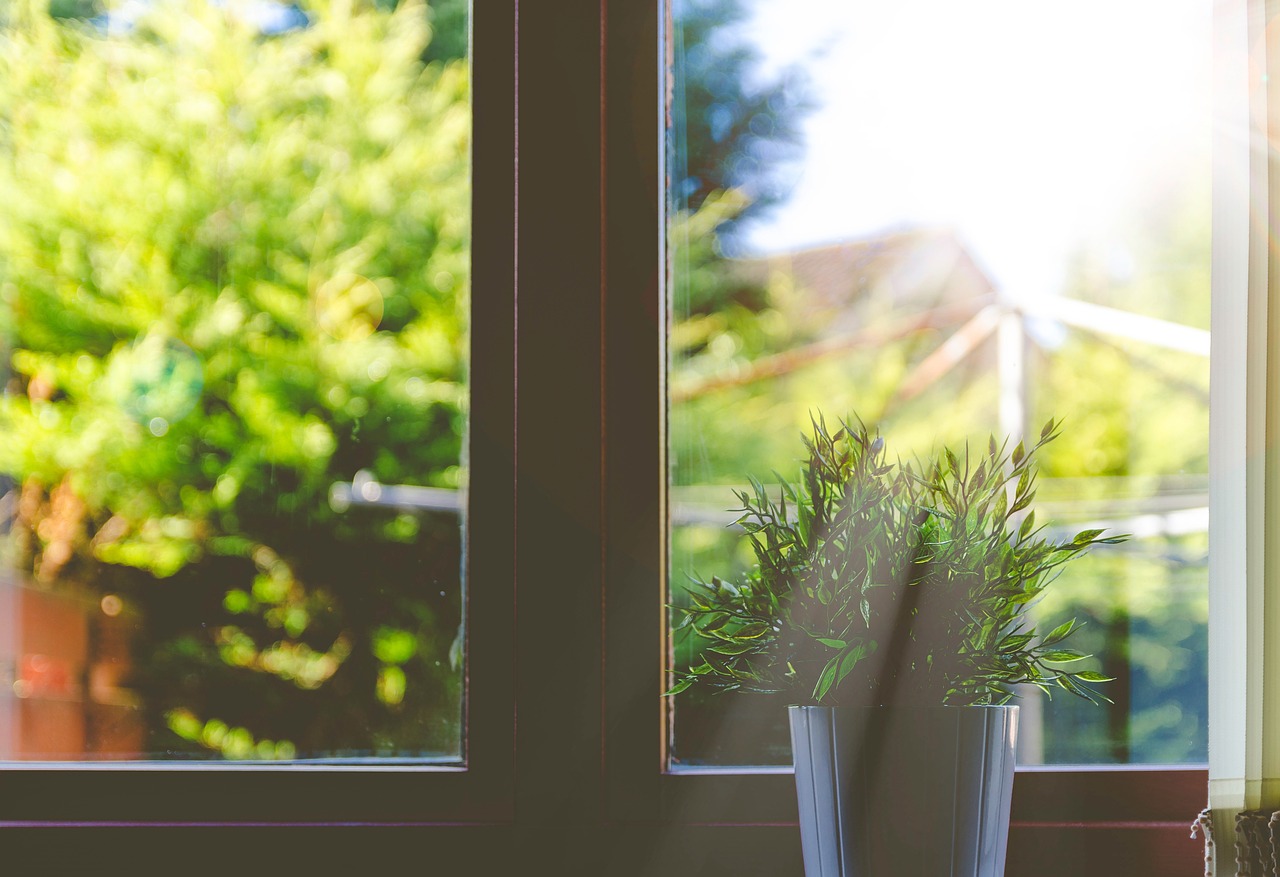
Improved Emergency Response
When it comes to ensuring the safety of your home, one of the most significant advantages of home automation systems is their ability to facilitate improved emergency response. Imagine a world where your home can automatically alert the authorities in case of a fire, break-in, or medical emergency. This is not just a fantasy; it's the reality that many homeowners are experiencing today thanks to the integration of smart technology in their living spaces.
Home automation systems are designed to monitor your environment continuously, and they can act swiftly when a potential threat is detected. For instance, if a smoke detector senses smoke, the system can immediately notify both the homeowner and local fire services. This rapid response can be the difference between a minor incident and a catastrophic event. Think of it as having a vigilant guardian watching over your home 24/7!
Moreover, these systems can be programmed to notify your emergency contacts as well. This means that if you're not home or unable to respond, your loved ones can be alerted and take action. The integration of these features not only enhances safety but also provides peace of mind, knowing that help is just a click away.
Here are some key features of home automation systems that enhance emergency response:
- Automatic Notifications: The system can send alerts to your phone or tablet, ensuring you're always in the loop.
- Direct Connection to Emergency Services: Many systems can directly contact local authorities, expediting response times.
- Integration with Smart Devices: Devices like smart speakers can relay emergency information, making it easier for you to communicate in a crisis.
Additionally, smart home systems often include features like automated lighting, which can illuminate pathways during emergencies, guiding you safely out of the house. Imagine the lights flickering on as you rush to evacuate; it’s like having a personal assistant helping you navigate through chaos.
In summary, the improved emergency response capabilities of home automation systems not only protect your home but also safeguard your family. By automatically alerting the proper authorities and providing you with real-time updates, these systems ensure that you are never alone in a crisis. So, if you haven't yet considered upgrading to a smart home, now might be the perfect time to explore the options available to you!
Q1: How do home automation systems detect emergencies?
A1: Home automation systems utilize various smart sensors, such as smoke detectors, carbon monoxide detectors, and security cameras, to monitor for signs of emergencies. When a threat is detected, they can send alerts to homeowners and emergency services.
Q2: Can I customize the emergency response settings?
A2: Yes, most home automation systems allow homeowners to customize their emergency response settings, including which contacts to notify and how to respond to specific types of alerts.
Q3: What happens if the internet goes down?
A3: Many home automation systems have backup features that allow them to continue functioning even if the internet connection is lost. Some systems can use cellular networks to send alerts.
Q4: Are home automation systems expensive?
A4: The cost of home automation systems can vary widely based on the features and devices you choose. However, the investment can be worthwhile considering the enhanced safety and convenience they provide.

Smoke and Carbon Monoxide Detectors
When it comes to ensuring the safety of your home, are like the unsung heroes of home automation systems. Imagine having a guardian angel that watches over you 24/7, ready to spring into action at the first sign of danger. These smart devices not only alert you to smoke and fire but also detect the silent, invisible threat of carbon monoxide, a colorless and odorless gas that can be deadly. By integrating these detectors into your home automation system, you create a safety net that enhances your peace of mind.
One of the most impressive features of modern smoke and carbon monoxide detectors is their ability to send alerts directly to your smartphone. This means that even if you're away from home, you can receive immediate notifications if something goes awry. For instance, if a smoke detector senses smoke from a potential fire, you'll be notified instantly, allowing you to take necessary action or alert emergency services. This real-time monitoring is crucial because every second counts in an emergency.
Moreover, these detectors often come equipped with advanced technology that can differentiate between false alarms and genuine threats. For example, if you're cooking and accidentally set off the smoke detector, some models can recognize the difference between cooking smoke and actual fire smoke, minimizing unnecessary panic and disturbances. This feature not only saves you from the annoyance of constant false alarms but also reinforces the reliability of your home security system.
Let's not forget about the integration aspect. Many home automation systems allow these detectors to work in tandem with other smart devices. For instance, if a smoke detector goes off, it can automatically trigger your smart lighting system to illuminate escape routes, ensuring that you and your family can exit the home safely. Additionally, these systems can notify local fire departments or emergency contacts, ensuring that help is on the way even if you are unable to call for it yourself.
In terms of installation and maintenance, these detectors are designed to be user-friendly. Most models come with easy installation guides, and many are battery-operated, which means you don't have to worry about wiring them into your existing electrical system. Regular maintenance is also simplified, as many smart detectors will remind you when it's time to change batteries or perform system checks, ensuring that your safety devices are always in top condition.
In summary, integrating smoke and carbon monoxide detectors into your home automation system is not just a smart choice; it's a life-saving decision. With features like mobile alerts, false alarm reduction, and seamless integration with other smart devices, these detectors provide a comprehensive safety solution that enhances your home's security. So, do yourself a favor: invest in these essential devices and enjoy the peace of mind that comes with knowing your home is protected.
- How do smoke and carbon monoxide detectors work? These detectors use sensors to identify smoke particles or carbon monoxide levels in the air, triggering an alarm when dangerous levels are detected.
- Can I connect my detectors to my smartphone? Yes, many modern smoke and carbon monoxide detectors can send alerts to your smartphone, allowing you to monitor your home remotely.
- How often should I test my detectors? It's recommended to test your smoke and carbon monoxide detectors at least once a month to ensure they are functioning properly.
- What should I do if my detector goes off? Evacuate your home immediately and call emergency services. Do not re-enter until authorities have deemed it safe.
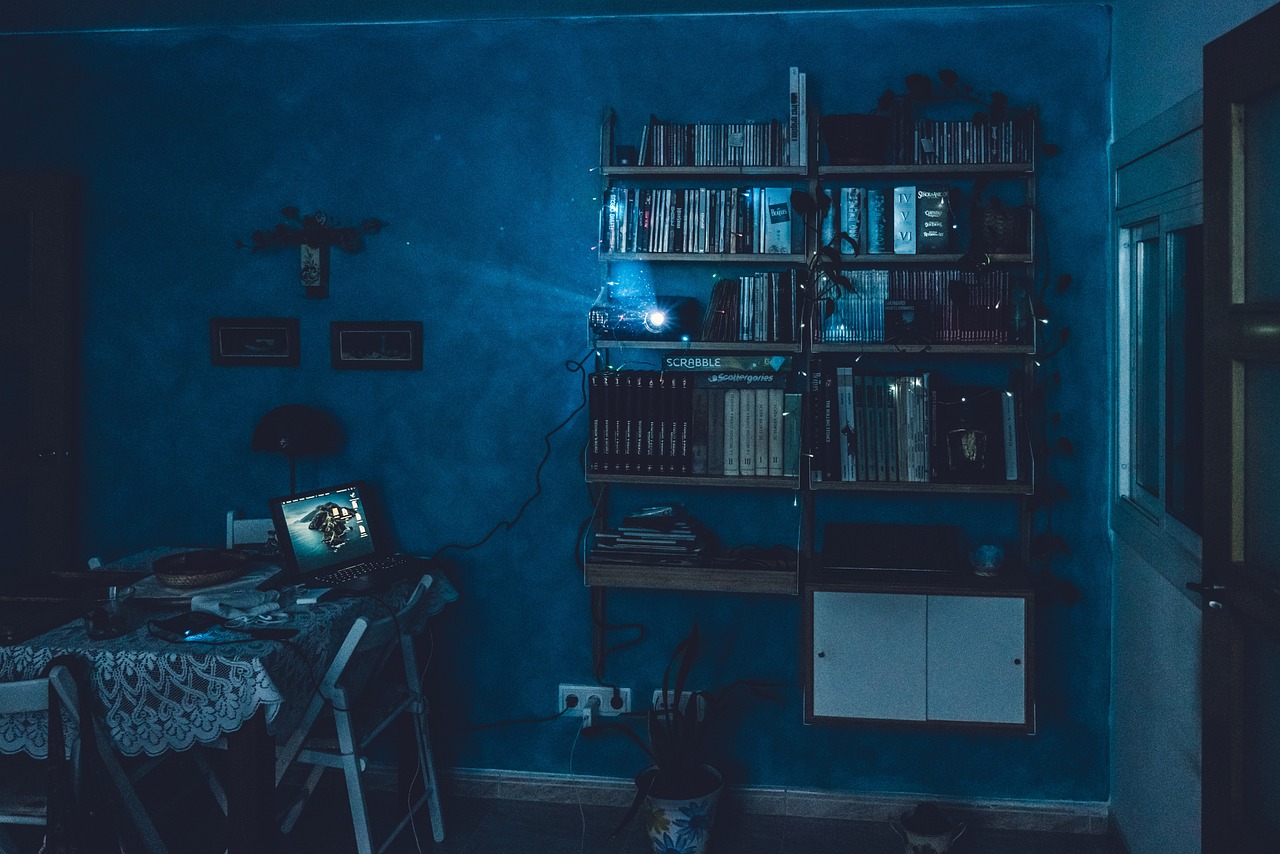
Automated Lighting Systems
This article explores the various safety benefits that home automation systems offer, including enhanced security, convenience, and peace of mind for homeowners.
Home automation systems provide advanced security features such as smart locks and surveillance cameras, enabling homeowners to monitor their property remotely and receive real-time alerts about suspicious activities.
With remote monitoring capabilities, homeowners can keep an eye on their property from anywhere, ensuring they are always aware of potential security threats and allowing for prompt action if necessary.
Mobile alerts notify homeowners of any unusual activity detected by their home automation systems, allowing for immediate response to potential security breaches and enhancing overall safety.
Many home automation systems integrate seamlessly with professional security services, providing an additional layer of protection through monitoring and rapid response to emergencies.
Homeowners can customize their security settings based on their specific needs, ensuring that their home automation system is tailored to effectively protect their property.
Video surveillance systems, integrated into home automation, allow homeowners to review footage and monitor live feeds, enhancing their ability to detect and respond to security incidents.
Home automation systems can facilitate faster emergency response by automatically notifying authorities or emergency contacts in case of fire, break-ins, or medical emergencies, ensuring quicker assistance.
Smart smoke and carbon monoxide detectors can alert homeowners and emergency services in case of a threat, significantly improving safety measures within the home.
Automated lighting systems are not just a convenience; they are a powerful tool in enhancing the safety of your home. Imagine coming home to a well-lit environment after a long day, or better yet, leaving for a vacation without worrying about leaving your home in darkness. These systems can be programmed to turn lights on and off at specific times, creating the illusion that someone is home, which can deter potential intruders. Isn't it comforting to know that your home can appear occupied even when you’re miles away?
Moreover, many automated lighting systems can be controlled via mobile apps, allowing you to adjust settings in real-time. For instance, if you receive an alert about suspicious activity outside your home, you can turn on your outdoor lights to illuminate the area and potentially scare off any would-be intruders. This level of control and responsiveness adds an essential layer of security.
In addition to deterring crime, automated lighting can also enhance safety in emergency situations. For example, if a smoke detector goes off, your automated lighting system can be programmed to guide you safely to the nearest exit by illuminating your escape route. This can be crucial during a fire or other emergencies when every second counts.
Furthermore, many of these systems can integrate with other smart home devices. For instance, when your security system detects a break-in, it can trigger the lights to flash or turn on, alerting you and your neighbors to the situation. The synergy between various smart devices creates a comprehensive safety net.
- What are automated lighting systems? Automated lighting systems are smart lighting solutions that can be programmed or controlled remotely to turn on or off at specific times or in response to certain events.
- How do automated lighting systems enhance security? They create the illusion of occupancy, can be controlled remotely, and can respond to security alerts, making them effective in deterring intruders.
- Can automated lighting systems integrate with other home automation devices? Yes, many automated lighting systems can be integrated with security systems, smoke detectors, and other smart home devices for enhanced functionality.
- Are automated lighting systems easy to install? Most systems are designed for easy installation, often requiring little more than a Wi-Fi connection and a compatible app.
Frequently Asked Questions
- What are the main security features of home automation systems?
Home automation systems boast a variety of security features, including smart locks, surveillance cameras, and motion detectors. These tools allow homeowners to monitor their property remotely, receive real-time alerts, and manage access to their homes, making it easier to keep their living spaces safe.
- How does remote monitoring work?
Remote monitoring enables homeowners to keep an eye on their property from anywhere via smartphone apps or web interfaces. This means you can check live feeds from security cameras, receive notifications about unusual activities, and even control your home automation devices while you’re away, ensuring peace of mind.
- Can I customize my home automation security settings?
Absolutely! Most home automation systems offer customizable security settings tailored to your specific needs. You can set up alerts, adjust camera angles, and schedule automated lighting to simulate presence, all designed to enhance your home’s security based on your lifestyle.
- How do mobile alerts enhance security?
Mobile alerts keep you informed about any suspicious activities detected by your home automation system. Whether it’s a door being opened unexpectedly or movement in your backyard, these alerts allow for immediate response, helping you to act quickly to potential threats.
- What role do smart detectors play in home safety?
Smart smoke and carbon monoxide detectors are crucial for enhancing home safety. They can detect threats and automatically alert both homeowners and emergency services, ensuring that help is dispatched quickly in case of a fire or gas leak, potentially saving lives and property.
- How do automated lighting systems deter intruders?
Automated lighting systems can simulate your presence at home by turning lights on and off at scheduled times. This unpredictability makes it harder for intruders to determine whether anyone is home, effectively deterring break-ins and enhancing overall security.
- Can home automation systems integrate with professional security services?
Yes! Many home automation systems can seamlessly integrate with professional security services. This partnership provides an extra layer of protection, as your home can be monitored 24/7, and authorities can be notified instantly in case of emergencies.
- What should I consider before installing a home automation system?
When considering a home automation system, think about your specific security needs, budget, and the types of devices you want. Research different systems and their features, and consider how they can be integrated into your current home setup for maximum effectiveness.



















